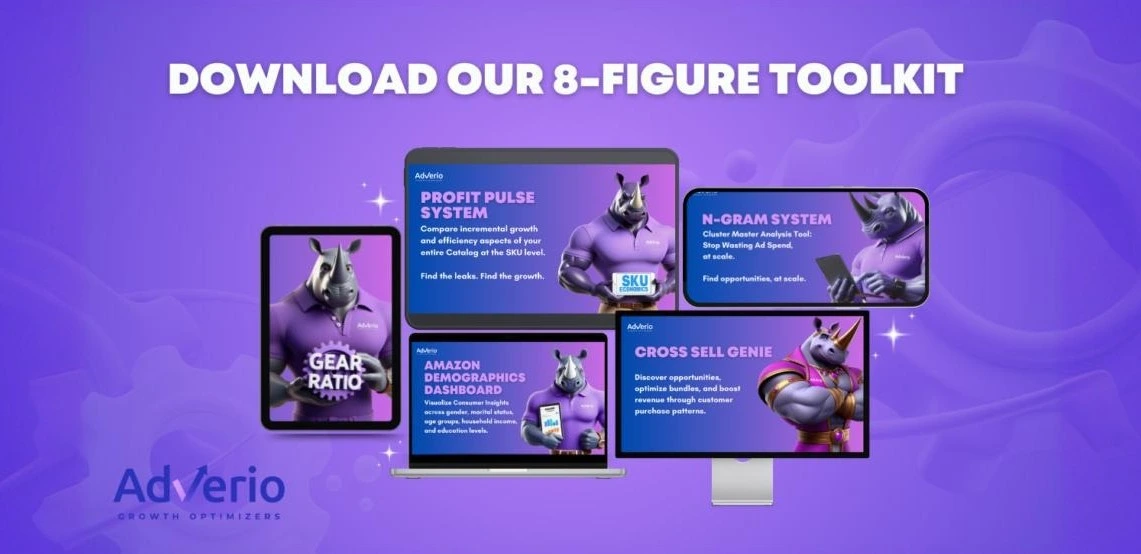Table of Contents
Imagine this: you’re pouring money into Amazon ads, but your competitors seem to be running laps around you. They’re taking your customers, dominating search results, and growing their market share while you’re left questioning whether your strategy—or even the platform—is worth it. Frustrating, right? It’s time to stop spinning your wheels and start leveraging Amazon’s platform to your advantage.
The Changing Landscape of Ecommerce Marketplaces
Ecommerce marketplaces are no longer overlooked, passive sales channels—they’re battlegrounds where mid-sized businesses either thrive or falter. Over the past decade, marketplaces like Amazon, Walmart, and Target have shifted dramatically, with advertising emerging as the cornerstone of success.
What’s changed? Paid media strategies have become far more complex and costly. Cost-per-click (CPC) rates are climbing, ad placements are saturating every inch of the screen, and platform relevancy algorithms are making it harder for sellers to compete without a deep understanding of data and strategy.
For mid-sized brands, while this presents a challenge; it’s also an opportunity. The key is learning how to outmaneuver competitors with precision rather than sheer ad spend.
Strategic Foundations: What Marketplace Success Requires
Here’s the hard truth: simply listing your products and running a few ads won’t cut it anymore. To thrive, businesses need to approach marketplaces with a holistic strategy that addresses these core pillars:
- Product Selection and Catalog Optimization: Not every product in your catalog belongs on every marketplace. Before expanding, analyze performance data to determine which SKUs have the highest potential. Products that dominate in one channel may underperform elsewhere due to differences in pricing sensitivity, customer preferences, or marketplace saturation.
Actionable Insight: Conduct a marketplace-specific audit of your catalog. Look for underperforming SKUs that might benefit from updated pricing, improved copy, or revised ad targeting. Don’t forget to test different combinations of product groupings or packaging—small tweaks can yield big results. - Dynamic Pricing as a Competitive Edge: Pricing is no longer static—it’s a dynamic lever that can make or break your marketplace success. Amazon, for example, monitors your pricing across platforms, and discrepancies can lead to suppressed listings or lost buy boxes. Meanwhile, marketplaces like Macy’s or Walmart run frequent promotions that can inadvertently hurt your sales elsewhere.
Actionable Insight: Implement a dynamic pricing strategy that uses data from your advertising performance, click-through rates, and competitor analysis. Use tools that automate price adjustments across marketplaces within predefined floors and ceilings to protect margins without losing competitiveness. - Advertising Beyond the Basics: Most mid-sized businesses know the basics of Amazon PPC—targeting keywords, running auto or manual campaigns, and refining bids. But advanced strategies like placement multipliers, category targeting, and audience segmentation are often underutilized.
Actionable Insight: Shift your mindset from “fixing” underperforming campaigns to scaling what’s working. Use metrics like conversion rates, TACoS, and the power ratio of branded vs. non-branded traffic to identify top-performing campaigns. Double down on those while continually auditing your account to eliminate wasteful spend.
Why Patience is a Competitive Advantage
One of the biggest mistakes brands make is expecting immediate success on new platforms or with new products. It takes time to establish a foothold and understand the nuances of each marketplace. Marketplace dynamics can vary significantly—for instance, Walmart’s sales volume is often only 5-20% of Amazon’s, yet its audience may be more price-sensitive or focused on specific categories.
To navigate this complexity, give new initiatives at least a year to yield meaningful data. Break that year into quarterly reviews to assess incremental progress, refine your strategy, and evaluate whether the “juice is worth the squeeze.”
The Untapped Potential of TikTok and Non-Traditional Marketplaces
While Amazon remains the dominant player, alternative marketplaces and social commerce platforms like TikTok, Temu, and Amazon Haul are rapidly gaining traction. TikTok’s growing integration with ecommerce means brands have an opportunity to drive traffic and build awareness in ways that extend beyond the traditional marketplace model.
Actionable Insight: Pair TikTok campaigns with Amazon storefront deep links or Walmart listings to drive traffic directly to your products. Consider leveraging TikTok’s algorithm to create content that mirrors consumer behavior—highly visual, engaging, and trend-driven.
Common Pitfalls to Avoid96
- Ignoring Marketplace-Specific Rules: Algorithms on platforms like Amazon and Walmart are increasingly strict about compliance. Ensure your listings meet their standards for copy, images, and categorization—or risk suppression.
- Overextending Too Quickly: Expanding to multiple marketplaces without the infrastructure to manage pricing, inventory, and advertising will backfire. Start with one additional platform, assess performance, and build from there.
- Neglecting Your Existing Catalog: Before expanding, audit your current listings to ensure they’re getting the attention they deserve. Many brands miss out on incremental revenue by hyperfocusing on their top performers and failing to give attention to their B and C tier products.
Final Thoughts
Success in digital marketplaces isn’t about throwing money at ads or jumping onto every platform—it’s about being strategic, adaptable, and willing to invest the time and effort needed to build a sustainable foundation. By optimizing your catalog, refining your pricing strategy, and leveraging advanced advertising techniques, your brand can not only survive but dominate the competition.
Ready to take your marketplace strategy to the next level? Access our free 8-figure ecommerce toolkit here and unlock proven frameworks, advanced tools, and actionable insights that help mid-sized businesses scale smarter.





























